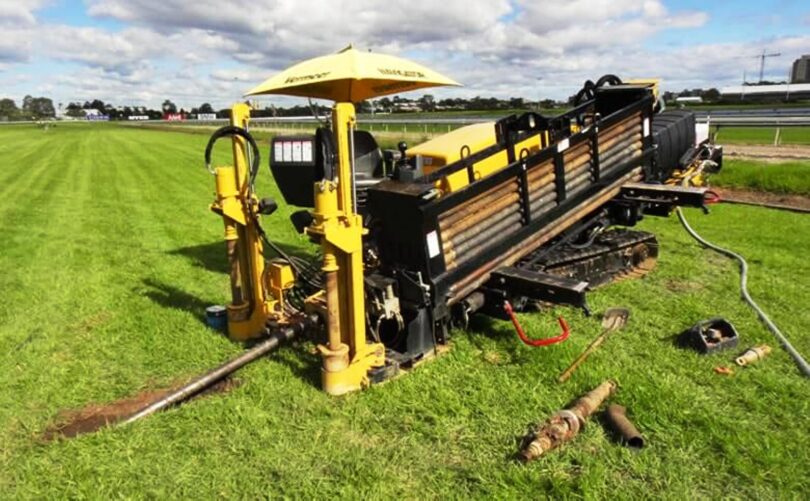Horizontal directional drilling is an excavation technique for installing pipelines, cables, and utility conduits without using trenches and other digging methods.
Horizontal directional drilling (HDD) has gained popularity over the years as a way to install underground transmission and distribution lines in the construction industry. Using this method has decreased the extended power outages that sometimes occur in the aftermath of a large storm.
Another great advantage of using HDD is that you don’t have to dig up the ground, creating numerous disruptions. Protecting the roadways and other existing infrastructure is particularly beneficial during construction.
What is horizontal directional drilling?
Understanding horizontal directional drilling begins with thinking of it as a technique to install pipelines, cables, and utility conduits without digging or excavating the ground. In this process, the ground is drilled using a machine along the desired path and the pipe fits into the drilled hole to meet the placement specifications.
The method is also used in drilling sites to obtain oil with less effort and energy. As the path is pre-determined, you can drill along the path and prevent excessive mess from happening on the site.
The benefits of HDD
HDD is becoming increasingly popular because it enables greater precision and flexibility in the placement. It also reduces the cost of digging. You don’t have to use large crews, initiate road closures, or worry about similar complications associated with traditional digging methods and pipe installation techniques. Whether it’s for installing, repairing, or maintaining the underground pipes, using HDD makes it a very cost-effective approach.
Easy installation in difficult places
Placing pipes and other cables in difficult places like rivers and other water bodies becomes a tedious task if you follow traditional drilling methods, and there is more chance of equipment getting damaged during the long installation process.
On the other hand, in HDD, you will see the usage of durable materials with longer lives and better positioning accuracy. So, the chance of materials getting damaged due to the wetness is greatly minimised if you follow HDD. By following HDD, you can easily install pipes under rivers, driveways, etc., promising long-term endurance for buried pipes and other utility lines.
Cost-effectiveness
When you use HDD, you don’t have to spend additional money on storage. As it enables fast installation of pipes and cables, there’s no need to store them for so long before the installation. Additionally, less ground is disturbed, and the amount of land to be restored is minimised.
And the best thing is, in HDD, the operational equipment is less in comparison to other drilling equipment and the operators required are reduced. This means you can cut down on labour costs. You don’t have to rent backhoes and other heavy equipment for HDD, which will enable fewer expenses for the project. Overall, it’s a cost-effective method when compared to open-cut drilling.
Reduced disruption
In HDD, a hole is dug. However, your landscaping is not damaged or torn up during the excavation. It requires less soil displacement and you don’t have to dig the entire length of the pipe or line into your property. You can protect your landscape and spend less time cleaning up in the aftermath of the process. In a nutshell, HDD is both a cost-effective and time-saving process.
Flexible location
Using HDD, you can place pipes or cables in any location without any exception. Whether it’s on the road, inside water, rough terrain, etc., there is no place where you can’t use HDD. It makes this method flexible and the most sought-after method for digging. You can run a cable under a road, driveway, culvert, river, or where the pipe has to bend. What seems impossible with other methods, HDD makes it possible with less time and effort.
The future for HDD
HDD is a time-saving, cost-effective and efficient way to dig holes and lay pipes and cables under the ground. Many companies use HDD to install telecommunications, power, natural gas lines, etc. Because of its benefits, many contractors propose this method during the construction process, which requires underground work.
The future of HDD looks promising as the demand for underground infrastructure continues to rise. With urbanisation and the expansion of smart cities, the need for efficient and minimally invasive methods like HDD is increasing. On top of this, advancements in HDD technology are making the process even more precise, reducing the environmental impact and further lowering costs. As environmental regulations become stricter, HDD’s ability to minimize surface disruption makes it an attractive choice for contractors and local councils alike.
“The opinions expressed by BizWitty Contributors are their own, not those of BizCover and should not be relied upon in place of appropriate professional advice. Please read our full disclaimer."







